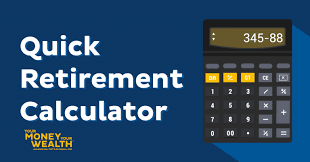Take control of your personal loan repayment with our innovative tool Personal Loan Calculator which is also called Personal Loan Amortization Schedule Calculator. This tool will help you evaluate your loan options, plan your repayment journey, and make informed decisions, empowering you to achieve financial stability and work towards a debt-free future with confidence.Amortization Personal Loan will help you to provide amortization schedule.
Personal Loan Calculator
Personal Loan Amortization Schedule
| Year | Balance | Payment | Principal | Interest | New Balance |
|---|
Personal loans can be a great way to get the funding you need for a variety of purposes, from consolidating debt to paying for home repairs. But with so many types of personal loans available and so many factors to consider, it can be overwhelming to navigate the world of personal finance. In this ultimate guide, we’ll cover everything you need to know about personal loans, including what they are, why to use them, how rates are determined, and how to apply for a personal loan.
What are Personal Loans?
A personal loan is a type of unsecured loan that is issued to an individual borrower, rather than a business or organization. Unlike a secured loan, which is backed by collateral such as a house or car, a personal loan is not tied to any specific asset. This means that personal loans are often easier to obtain than secured loans, as there is no collateral that needs to be appraised and evaluated.
Personal loans can be used for a wide range of purposes, including home improvements, debt consolidation, major purchases, and unexpected expenses. They are typically available in loan amounts ranging from a few thousand dollars to tens of thousands of dollars, with repayment terms ranging from a few months to several years.
How Do Personal Loans Work?
When you take out a personal loan, you’ll receive a lump sum of money from the lender, which you’ll be responsible for repaying over time. This repayment typically takes the form of monthly payments, which include both principal and interest. The interest rate you’ll be charged on your personal loan will depend on a variety of factors, including your credit score, the amount you’re borrowing, and the length of the repayment term.
Benefits of Personal Loans:
There are several benefits to using a personal loan, including:
- Flexibility: Personal loans can be used for a wide range of purposes, from consolidating debt to funding a major purchase.
- No collateral required: Unlike secured loans, personal loans don’t require any collateral, which can make them a good option for those who don’t have assets to put up.
- Fixed interest rates: Many personal loans come with fixed interest rates, which means that your monthly payments will remain the same throughout the life of the loan.
- Potentially lower interest rates: Depending on your credit score and other factors, you may be able to obtain a lower interest rate on a personal loan than you would on a credit card or other form of financing.
Drawbacks of Personal Loans:
While there are many benefits to using a personal loan, there are also some potential drawbacks to be aware of, including:
- Higher interest rates for some borrowers: If you have a low credit score or a history of missed payments, you may be charged a higher interest rate on your personal loan.
- Fees and charges: Some lenders may charge origination fees or other charges that can increase the cost of your loan.
- Risk of default: Because personal loans are unsecured, there is no collateral that the lender can seize if you fail to repay the loan. This means that personal loans come with a higher risk for the lender, which can translate into higher interest rates and more stringent lending criteria for borrowers.
When to Use a Personal Loan
While there are many benefits to personal loans, they’re not always the right choice for everyone. Here are a few situations where a personal loan might be the right choice:
Consolidating high-interest debt: If you’re struggling to keep up with multiple high-interest debts, a personal loan can help you simplify your payments and potentially save money on interest.
Financing a major purchase: If you’re planning to make a major purchase, such as a home renovation or a new car, a personal loan can provide you with the funds you need.
Covering unexpected expenses: If you have unexpected expenses, such as a medical emergency or a car repair, a personal loan can help you cover the costs without having to dip into your savings.
Types of personal loans
We’ll explore the different types of personal loans so you can make an informed decision about which one is right for your financial needs.
Secured Personal Loans:
Secured personal loans are loans that are backed by collateral, such as a car, home, or other valuable asset. Because the lender has collateral to fall back on if the borrower defaults on the loan, secured loans are generally easier to obtain and offer lower interest rates than unsecured loans. Some common types of secured personal loans include:
Auto Loans: Auto loans are a type of secured personal loan that is used to purchase a car. The car itself serves as collateral for the loan.
Home Equity Loans: Home equity loans are secured loans that allow homeowners to borrow against the equity they have in their homes. The loan amount is based on the amount of equity the borrower has in their home.
Unsecured Personal Loans:
Unsecured personal loans are loans that are not backed by collateral. Because the lender has no collateral to fall back on if the borrower defaults on the loan, unsecured loans are generally harder to obtain and offer higher interest rates than secured loans. Some common types of unsecured personal loans include:
Personal Lines of Credit: Personal lines of credit are revolving credit lines that allow borrowers to access funds up to a certain limit. The borrower can use the funds as needed and only pay interest on the amount borrowed.
Personal Installment Loans: Personal installment loans are fixed-rate loans that are repaid in equal installments over a set period of time. The interest rate is fixed for the life of the loan, so the borrower knows exactly how much they’ll pay each month.
Payday Loans: Payday loans are short-term loans that are typically due on the borrower’s next payday. These loans are designed to be a quick source of cash for those who need it, but they often come with high fees and interest rates. Payday loans should be used with caution and only as a last resort.
Personal Loans and Creditworthiness
If you’re considering applying for a personal loan, you may be wondering how your creditworthiness will impact your chances of approval and the interest rate you’ll be offered. In this article, we’ll explore the relationship between and creditworthiness, so you can understand how lenders evaluate your creditworthiness and what steps you can take to improve your chances of getting approved for a personal loan.
What is Creditworthiness?
Creditworthiness is a measure of your ability to repay debt. When you apply for a personal loan, the lender will evaluate your creditworthiness to determine whether you’re a good risk for the loan. This evaluation will typically include a review of your credit report, your credit score, and your income and expenses.
How Personal Loans Impact Your Creditworthiness
When you apply for a personal loan, the lender will conduct a hard inquiry on your credit report. This inquiry can temporarily lower your credit score by a few points. However, if you make your loan payments on time and in full, your credit score will gradually improve over time. This can help you build your creditworthiness and improve your chances of getting approved for future loans at lower interest rates.
Factors that Affect Your Creditworthiness:
There are many factors that can impact your creditworthiness, including your credit score, your debt-to-income ratio, your employment history, and your payment history. Lenders will evaluate all of these factors when determining whether to approve you for a personal loan and what interest rate to offer you.
Improving Your Creditworthiness:
If you have a low credit score or a history of missed payments, you may be considered a high-risk borrower by lenders. However, there are steps you can take to improve your creditworthiness over time. These steps may include paying off high-interest debt, making all of your payments on time, and keeping your credit utilization low. You may also want to consider working with a credit counselor or debt management professional to develop a plan for improving your creditworthiness.
How rates are determined
Understanding how personal loan rates are determined can help you make informed decisions about which loan to choose and how much you can afford to borrow. In this article, we’ll explore the factors that affect personal loan rates and how you can increase your chances of getting a lower rate.
Credit Score: One of the most important factors that lenders consider when determining personal loan rates is your credit score. Your credit score is a numerical representation of your creditworthiness and ranges from 300 to 850. The higher your credit score, the lower your interest rate is likely to be. If you have a low credit score, you may still be able to get a personal loan, but you may have to pay a higher interest rate.
Loan Amount and Term: The loan amount and term can also affect your personal loan rate. Generally, the higher the loan amount, the higher the interest rate. Additionally, longer loan terms may also result in higher interest rates. This is because the lender is taking on more risk by loaning you a larger sum of money over a longer period of time.
Debt-to-Income Ratio: Your debt-to-income ratio (DTI) is another factor that can impact your personal loan rate. This is the ratio of your monthly debt payments to your monthly income. If your DTI is high, you may be seen as a higher-risk borrower, and you may be offered a higher interest rate.
Employment History and Income: Your employment history and income are also factors that lenders consider when determining your personal loan rate. Lenders want to see that you have a stable source of income and a history of steady employment. If you have a high income and a stable job history, you may be offered a lower interest rate.
How to get a personal loan – Personal Loan Application
We’ll walk you through the steps you need to take to get a personal loan, from checking your credit to submitting your application.
Check Your Credit Score: Before applying for a personal loan, it’s important to check your credit score. Your credit score is a key factor that lenders use to determine your loan eligibility and interest rate. You can check your credit score for free from a variety of sources, including credit bureaus and credit monitoring services.
Compare Lenders: Once you have a good understanding of your credit score, it’s time to start shopping around for lenders. Look for lenders that offer personal loans with terms and rates that fit your needs. You can compare lenders online, through your bank or credit union, or through loan comparison sites.
Gather Your Documents: When you apply for a personal loan, you’ll need to provide documentation that verifies your income, employment, and identity. This may include pay stubs, tax returns, bank statements, and government-issued ID.
Fill out Your Application: Once you’ve chosen a lender and gathered your documentation, it’s time to fill out your application. Make sure to provide accurate and complete information, and be prepared to answer questions about your income, employment history, and reason for borrowing.
Wait for Approval: After submitting your application, you’ll need to wait for your lender to review your information and make a decision. This process can take anywhere from a few days to a few weeks, depending on the lender and your financial situation.
Receive Your Funds: If your loan is approved, your lender will typically deposit the funds directly into your bank account. Make sure to read your loan agreement carefully and understand the terms and conditions of your loan, including the interest rate, repayment schedule, and any fees.
Common mistakes when using a personal loan
We’ll discuss five common mistakes to avoid when using a personal loan.
Borrowing More Than You Need: One of the biggest mistakes people make when using a personal loan is borrowing more than they need. While it can be tempting to take out a larger loan, this can lead to unnecessary debt and higher interest payments. Before taking out a personal loan, make sure you have a clear understanding of how much money you actually need and only borrow that amount.
Not Shopping Around for the Best Rates: Another mistake people make when using a personal loan is not shopping around for the best rates. Different lenders offer different rates and terms, so it’s important to compare your options before choosing a lender. By doing your research, you can save money on interest payments and potentially get a better loan overall.
Not Understanding the Terms and Fees: Many people make the mistake of not fully understanding the terms and fees associated with their personal loan. Make sure to read your loan agreement carefully and ask your lender any questions you may have. Be aware of any fees associated with your loan, such as origination fees or prepayment penalties, and factor those into your budget.
Using a Personal Loan for Non-Essential Expenses: While personal loans can be useful for financing essential expenses, such as home repairs or medical bills, they should not be used for non-essential expenses, such as vacations or shopping sprees. Using a personal loan for non-essential expenses can lead to unnecessary debt and financial stress.
Not Having a Repayment Plan in Place: Finally, many people make the mistake of not having a repayment plan in place when taking out a personal loan. Make sure to understand your repayment schedule and budget accordingly. Missing payments or defaulting on your loan can have serious consequences, including damage to your credit score.
By avoiding these common mistakes, you can use a personal loan to improve your financial situation and achieve your goals.
Personal Loan Fees
Most common personal loan fees and how they work.
Origination Fee: An origination fee is a fee that lenders charge to process your loan application. This fee is typically a percentage of the total loan amount and is deducted from your loan proceeds. For example, if you take out a $10,000 personal loan with a 5% origination fee, you’ll only receive $9,500 in loan proceeds. Origination fees can range from 1% to 8% of the loan amount, depending on the lender.
Late Payment Fee: If you miss a payment or make a payment after the due date, you may be charged a late payment fee. This fee is typically a flat amount or a percentage of your monthly payment. Late payment fees can vary by lender, so it’s important to read your loan agreement carefully to understand how much you’ll be charged if you miss a payment.
Prepayment Penalty: Some lenders charge a prepayment penalty if you pay off your personal loan early. This fee is designed to compensate the lender for the interest they would have earned if you had made payments over the entire loan term. Prepayment penalties can range from 1% to 5% of the remaining loan balance, depending on the lender.
Annual Percentage Rate (APR): The APR is the interest rate plus any fees associated with your personal loan. This includes origination fees, late payment fees, and prepayment penalties. The APR gives you a more accurate picture of the total cost of borrowing, since it takes into account both the interest rate and fees. When comparing personal loans, it’s important to compare the APRs rather than just the interest rates.
Other Fees: In addition to these common fees, some lenders may charge other fees, such as application fees, check processing fees, or insufficient funds fees. Make sure to read your loan agreement carefully to understand all of the fees associated with your personal loan.
Personal Loan Alternatives
Explore some popular alternatives to personal loans.
Credit Cards: Credit cards can be a great alternative to personal loans, especially if you only need to borrow a small amount of money. Many credit cards offer introductory 0% interest rates, which can be a great way to finance a purchase or consolidate high-interest debt. However, it’s important to be mindful of the interest rates and fees that can kick in once the introductory period ends.
Home Equity Loans and Lines of Credit: If you own a home, you may be able to take out a home equity loan or line of credit. These loans use your home as collateral, which can make them easier to qualify for and may result in lower interest rates. However, it’s important to remember that these loans put your home at risk, so be sure to consider the potential consequences before taking out this type of loan.
Peer-to-Peer Lending: Peer-to-peer lending platforms, such as LendingClub and Prosper, allow individuals to borrow money directly from other individuals. These loans can often be obtained with lower interest rates than traditional personal loans, but they may come with higher fees or stricter eligibility requirements.
401(k) Loans: If you have a 401(k) retirement account, you may be able to take out a loan against your balance. These loans typically come with low interest rates and don’t require a credit check, but they do have some drawbacks. For example, if you leave your job or don’t repay the loan on time, you may be hit with penalties and taxes.
Family and Friends: While it’s not always the best idea to borrow from friends and family, it can be a good option in certain circumstances. If you have a trusted loved one who is willing and able to lend you money, this can be a low-cost and low-stress way to access the funds you need.
Personal loans are just one of many options for those who need to borrow money. By exploring alternative options, such as credit cards, home equity loans, peer-to-peer lending, 401(k) loans, and borrowing from family and friends, you can find the right solution for your unique financial situation.
The Power of the Personal Loan Calculator
In today’s dynamic world, financial decisions play a pivotal role in shaping our lives. Whether it’s for funding an education, managing medical expenses, or even planning a dream vacation, personal loans often come to the rescue.This is where the Personal Loan Calculator and the concept of Amortization in Personal Loans come into play.
The Role of a Personal Loan Calculator:
A Personal Loan Calculator is a financial tool designed to help you make informed decisions when considering a personal loan. It provides valuable insights into the loan’s terms, including the interest rate, loan amount, and loan duration. By inputting these variables into the calculator, you can quickly determine your monthly loan payments and total interest costs.
Amortization in Personal Loans:
Amortization is the process of spreading out loan payments over time. In the context of personal loans, it refers to the gradual reduction of both the principal (the initial loan amount) and the interest over the loan’s term. An Amortization Personal Loan typically follows a fixed repayment schedule, where you make equal monthly payments until the loan is fully paid off.
How a Personal Loan Amortization Schedule Calculator Works:
A Personal Loan Amortization Schedule Calculator is a specialized tool that provides a detailed breakdown of each loan payment. It displays the portion of each payment that goes toward interest and the portion that reduces the principal balance. As you progress through the loan term, the interest portion decreases, while the principal repayment portion increases.
Why Use These Tools:
Budget Planning: Personal Loan Calculators help you plan your budget by providing a clear picture of your monthly financial commitments.
Comparison: You can use these calculators to compare different loan offers from various lenders and choose the one that suits your financial goals.
Financial Transparency: By examining the Amortization Schedule, you gain transparency into how each payment impacts your loan balance and the total interest paid.
Early Repayment Strategy: These tools empower you to explore the benefits of making extra payments or repaying the loan early, potentially saving on interest costs.
Financial Discipline: Understanding the financial implications of a personal loan promotes responsible borrowing and financial discipline.
FAQ
Some of the most frequently asked questions about personal loans.
What is a personal loan?
A personal loan is a type of loan that is not secured by collateral, such as a car or house. Instead, it’s based on your creditworthiness and income.
How do I qualify for a personal loan?
Qualifying for a personal loan typically requires a good credit score, stable income, and a low debt-to-income ratio. Lenders may also consider factors such as your employment history, credit history, and outstanding debt.
How much can I borrow with a personal loan?
The amount you can borrow with a personal loan varies depending on the lender and your creditworthiness. Generally, personal loans range from $1,000 to $50,000.
How long does it take to get approved for a personal loan?
The time it takes to get approved for a personal loan varies depending on the lender and your application. Some lenders offer instant approval, while others may take several days to review your application.
How long do I have to repay a personal loan?
The repayment period for a personal loan typically ranges from one to five years. However, some lenders may offer longer repayment periods for larger loans.
What is the interest rate on a personal loan?
The interest rate on a personal loan varies depending on the lender and your creditworthiness. Generally, interest rates range from 6% to 36%.
What fees are associated with personal loans?
Personal loans may come with fees such as origination fees, prepayment penalties, and late payment fees. Be sure to read the terms and conditions of your loan agreement carefully to understand any fees associated with your loan.
Can I use a personal loan for anything?
Yes, you can use a personal loan for any purpose, including home improvements, debt consolidation, or major purchases.
What happens if I can’t repay my personal loan?
If you can’t repay your personal loan, you may face consequences such as late fees, damage to your credit score, and even legal action. It’s important to contact your lender as soon as possible if you’re having trouble making payments.

In Conclusion:
The Personal Loan Calculator and the concept of Amortization in Personal Loans provide valuable insights into the world of borrowing and lending. By leveraging these tools, you can make well-informed financial decisions, manage your debt responsibly, and work toward achieving your financial goals. Whether you’re taking out a personal loan for a specific purpose or consolidating debt, these calculators can be your trusted companions on your financial journey.
Personal Loan Calculator – Personal Loan Amortization Schedule Calculator – Amortization Personal Loan
Legal Notices and Disclaimer
All Information contained in and produced by the ModernCalculators.com is provided for educational purposes only. This information should not be used for any Financial planning etc. Take the help from Financial experts for any Finace related Topics. This Website will not be responsible for any Financial loss etc.





